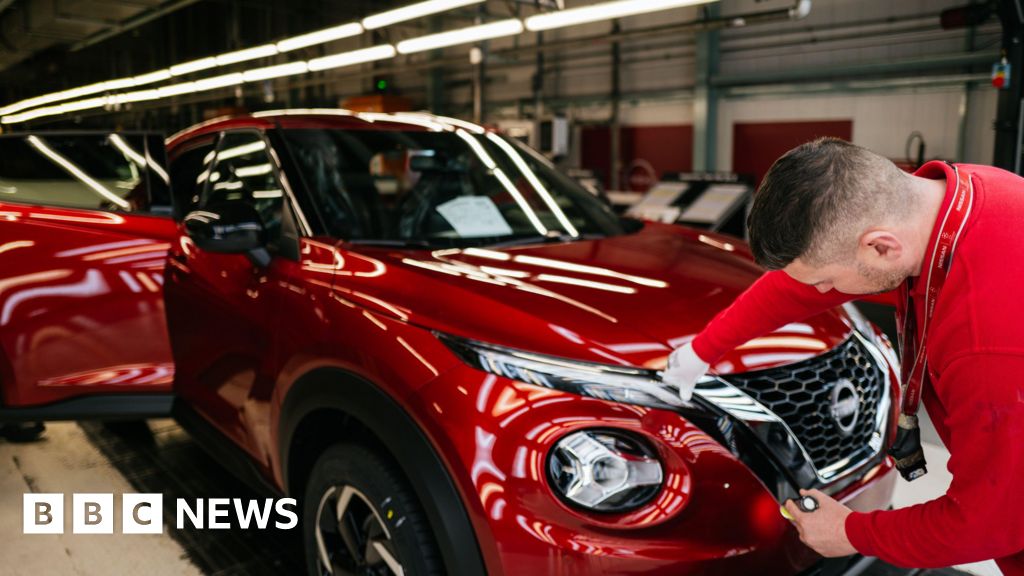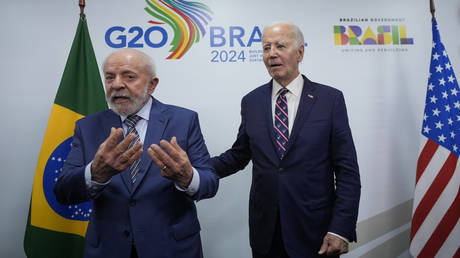Tariffs, end of EV tax credits, and bad consumer sentiment are ruining automakers’ plans

The ongoing tariff war, the potential end of federal incentives, and a general slowdown in consumer demand all spell uncertainty for the future of electric vehicles in the United States—and for automakers’ future product lineups.
That’s according to a recent analysis from Bank of America, which released a “Car Wars” report looking at the challenges U.S. automakers are currently facing, and what that means for future electric vehicle models.
“The unprecedented EV head-fake has wreaked havoc on product plans,” Bank of America Securities analyst John Murphy wrote in the report. “This has driven a pothole in product launches in Model Years 2026 and 2027. …The next four+ years will be the most uncertain and volatile time in product strategy ever.”
To deal with those uncertainties, Bank of America analysts recommend automakers back away from EV models and instead “lean heavily into their core [internal combustion engine] product portfolios to generate the capital to fund the uncertain future.” The report’s full title emphasizes this change, too: “Car Wars 2026-2029: The ICE Age Cometh as EV Plans Freeze.”
Slowing EV sales
EV sales did increase in 2024 compared to the year prior, but the rate of that growth has slowed. That illustrates a challenge for carmakers: all the early adopters who are excited about EVs have already bought electric vehicles, and after that rush of enthusiasm, it becomes harder for the market to attract mainstream buyers.
This is the challenge on consumer demand that Bank of America analysts touch on. That, combined with the Trump Administration’s efforts to kill the Inflation Reduction Act’s EV tax credits, which incentivize electric vehicle purchases, and the tariffs on auto parts, are all adding to automakers’ struggles.
Over the next four years, the Bank of America report says automakers are expected to launch 159 new vehicles; traditionally, it’s over 200 new vehicles across a four-year outlook. “The lower launch count is largely a result of the delay in new EV programs as consumers remain disinterested, the regulatory push for EVs is relaxed, consumer EV incentives are likely to be eliminated, and potential tariffs are roiling production/supply chain management decisions,” the report reads.
A push for hybrids
Automakers do still have EVs in the works, though, and consumers are also about to see more hybrid options, too. As EV offerings are losing ground—representing 34% of upcoming car models, down from 40% last year and 44% in 2023, per the analysis—hybrids are growing to 28% of new powertrain offerings over the next four years, up from 20% last year and 17% in 2023. “Hybrids appear to be gaining more relevancy as many consumers seek more efficient vehicles but are disinterested in EVs,” the report reads.
That will include hybrids from Toyota, which has long been a leader in hybrid options (though recently appeared to look to expand its EV portfolio), as well as Hyundai-Kia, Stellantic, Ford, GM, and Honda. GM is expected to launch 9 hybrids in that time period, per the analysis, as will Stellantis. Both Hyundai and Toyota are expected to launch eight to their hybrid lineups.
Bank of America forecasts those new models will lead to an estimated 3.4 million hybrid sales in 2028 (for model year 2029), or about 20% market share. (In 2024, both EV and hybrids together reached a record 20% of all U.S. vehicle sales.) Still, that market penetration rate appears “to undershoot the relative hype that has been building in response to the stall in EV sales,” the report reads. “Simply, automakers need to launch more hybrid vehicles in the U.S. market, in our view.”
What's Your Reaction?
 Like
0
Like
0
 Dislike
0
Dislike
0
 Love
0
Love
0
 Funny
0
Funny
0
 Angry
0
Angry
0
 Sad
0
Sad
0
 Wow
0
Wow
0






























































































